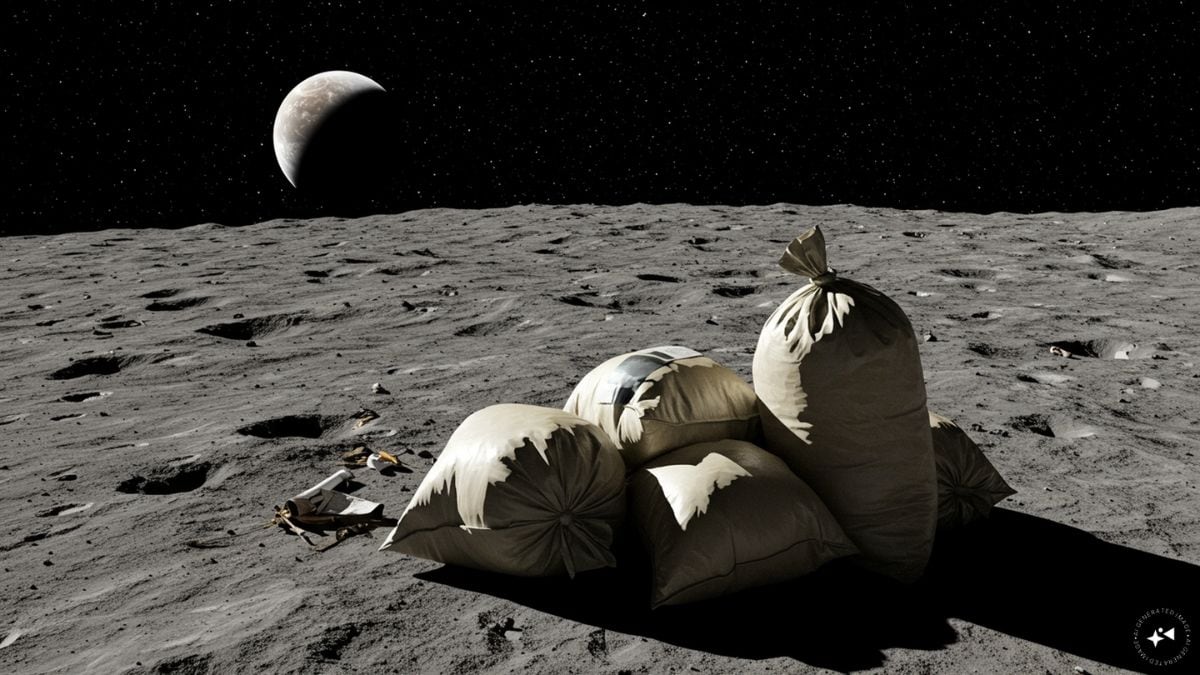Nasa is offering a $3 million reward to anyone who can develop a solution for dealing with dozens of bags of human waste left on the moon more than 50 years ago.
Through its LunaRecycle Challenge, the space agency is asking the public to design systems that can manage and recycle faeces, urine and vomit during long-term lunar stays or deep space journeys.
ALSO READ |
How long can astronauts live in space?
The chosen idea is set to be implemented in future expeditions, including efforts to establish a sustained presence on the moon.
In this report, we explore why Nasa launched the LunaRecycle Challenge, the science behind waste processing in space, and other important details.
Nasa’s LunaRecycle Challenge: $3M for recycling human poop in space
The LunaRecycle initiative calls for thinkers and experts to address the long-standing waste issue while paving the way for a “biological legacy” ahead of upcoming lunar missions.
The aim is to convert 96 abandoned bags of faeces, vomit and urine, left behind by Apollo mission crews to reduce weight, into useful resources like fertiliser, power and drinking water.
In a statement, the agency said it is working to “reduce toxic outputs”, from what it jokingly called a galaxy fart, fart away.
“Nasa is committed to sustainable space exploration. As we prepare for future human space missions, we will need to consider how to minimise various waste streams, including solid waste, as well as how to store, process, and recycle them in a space environment so that they are returned to Earth as little as possible,” it added.
Officials are currently evaluating initial submissions and will pick the most promising solutions for the next phase. The winning concept will be awarded a $3 million prize.
During the Apollo missions in the 1960s and 1970s, astronauts left behind anything non-essential, from suits and equipment to their own biological waste, to make room for moon rock samples.
ALSO READ |
How does the human body change in space?
Now, with the Artemis programme preparing to return astronauts to the lunar surface, Nasa is hoping to find an environmentally sound method to manage human waste.
The chosen idea is set to be implemented in future expeditions. Nasa
“While previous efforts focused on the reduction of trash mass and volume, this challenge will prioritise technologies for recycling waste into usable products needed for off-planet science and exploration activities,” it said in a press release.
The challenge closed for entries on March 31. The agency is now reviewing proposals to identify the most effective innovations.
It welcomed global participation and sought ideas that could process all solid waste produced during human space exploration.
How is human waste managed in space today?
As space agencies plan for extended missions to the Moon and Mars, effective waste management is becoming increasingly essential.
According to Nasa, a crew of four astronauts can generate around 2,500 kilograms of waste during a year-long journey. This rubbish not only takes up valuable space but could also present biological and physical dangers to the crew.
On the International Space Station (ISS), astronauts currently manage their waste by manually sorting it into bags, which are then placed in designated containers.
The space agency is asking the public to design systems that can manage and recycle faeces, urine and vomit. Representational Image/AI-generated
These are stored onboard until they can either be brought back to Earth or allowed to disintegrate upon re-entry, depending on the spacecraft used. However, this approach is not feasible for missions beyond low-Earth orbit.
Recycling waste offers a way to reduce these risks, while also converting it into useful materials to support ongoing missions.
Small waste fragments can be fed into a high-temperature reactor, which Nasa says helps to break them down into water, oxygen, and other gases.
These outputs can then be reused or safely vented. What remains is massively reduced in volume and no longer poses a biological risk.
ALSO READ |
Fly me to the moon: How do women handle their period in space?
Where does astronaut waste go?
Ever thought about what happens to human waste produced aboard the International Space Station?
Since there is no plumbing in space, astronaut faeces cannot be flushed in the usual sense.
Instead, it is bundled with other waste and tossed from the station.
A 2015 report by Forbes, quoting Nasa, revealed that this waste burns up upon re-entering Earth’s atmosphere, producing what could be described as rather unpleasant “shooting stars”.
“[The faeces] will burn up in the atmosphere and look like shooting stars,” the agency said.
“Your faeces will not be shooting stars.”
